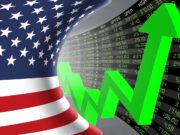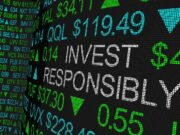The main risk of traditional short-selling is that while profit is capped (a stock can only fall to zero), risk is theoretically unlimited. Of course, other tactics can be used to cover a position at any time, but with a short-selling position, inventors are at risk of receiving margin calls on their trading account if their short position moves against them. But there is another way that you can take a bearish position.
Inverse or “short” ETFs are another option that allows you to profit when a certain investment class declines in value. Some investors use inverse ETFs to profit from market declines while others use them to hedge their portfolios against falling prices.
Over short periods of time you can expect that the inverse ETF will perform “the opposite” of the index, but over longer periods of time a disconnect may develop. Inverse ETFs will decline as an asset appreciates over time. For that reason, inverse ETFs typically are not seen as good long-term investments. Furthermore, frequent trading often leads to an increase in fund expenses and some inverse ETFs have expense ratios of 1% or more.
When approached correctly, inverse ETFs can be excellent day-trading candidates and highly effective short-term hedging tools. There are several inverse ETFs that can be used to profit from declines in broad market indexes, such as the Russell 2000 or the Nasdaq 100. Also, there are inverse ETFs that focus on specific sectors, such as financials, energy, or consumer staples.
Commonly used by investors as a hedging vehicle, ProShares Short S&P 500 (SH) strives to deliver the inverse performance of the S&P 500 (SPX). If you’re concerned about the stock market falling, then this fund that moves in the opposite direction of the largest 500 U.S. corporations is the simplest way to protect yourself. It’s important to note that SH is designed to deliver inverse results over a single trading session, with exposure resetting on a monthly basis. Investors considering this ETF should understand how that nuance impacts the risk/return profile, and realize the potential for “return erosion” in volatile markets. SH should definitely not be found in a long-term, buy-and-hold portfolio. The fund comes along with an expense ratio of 0.88%.
[stock_market_widget type=”accordion” template=”extended” color=”#5679FF” assets=”SH” start_expanded=”true” api=”yf”]






